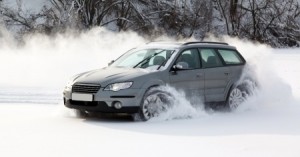The Benefits of Tinting Your Car’s Windows
 Window tinting has grown in popularity over the years, and it’s one of the many techniques we specialize in at our shop.
Window tinting has grown in popularity over the years, and it’s one of the many techniques we specialize in at our shop.
Tinted windows are not just for young people who want to look “cool”. In fact, there are many benefits associated with adding some tint to your car’s windows. Not only will your car be cooler temperature-wise, but tinted windows can also protect you in the event of an accident. Check out the bullets below for an expanded list of benefits.
- You’ll be cooler. Literally – Window tint is designed to block more than 70% of solar energy from entering your car. Not only will your car be cooler when you leave it parked in the sun, but it can keep you cool while you drive, minimizing the need for you to blast your AC unit.
- Protect your skin – Window tint is made to block up to 99% of the sun’s harmful UV rays. If you spend a lot of time in your car, it may be worth having your windows tinted to decrease your exposure to UV rays.
- Tinted windows shatter more safely than un-treated windows – Your car windows may shatter during a crash. Although the windows are designed to break in a safe manner, passengers can be in danger from flying glass when a window shatters. If tint is applied, the glass will break in one giant piece, meaning the occupants won’t be exposed to shards of flying glass.
- Keep your car safe – Car theft is often an impulse crime. Although a thief may decide in advance he’s going to break into a car, they usually don’t break in unless they spot something worth taking, like a backpack or purse. Not only will tinted window prevent would-be thieves from spotting your valuables, but they also won’t be able to see if your car has a built in alarm.
Tinting Laws in Minnesota
Now that you’ve brushed up on the benefits of window tinting, you might be considering getting your windows darkened. We’d love to help you with the procedure, but there are certain laws and regulations that govern which windows you can tint, and how dark they can be tinted.
A look the Minnesota Tint Law reveals that the state has some pretty strict standards compared to the rest of the nation. In order to regulate how tinted a window can be, darkness is measure by Visible Light Transmission percentage (VLT%). As you can tell by its name, VLT measures the amount of visible light that can pass through the window. Below, you can see the minimum VLT percentage each window on a passenger car must let in.
- Windshield – Tint is not allowed on the windshield.
- Front Side Windows – At least 50% of the sunlight must be allowed through the tint.
- Back Side Windows – At least 50% of the sunlight must be allowed through the tint.
- Rear Windshield – At least 50% of the sunlight must be allowed through the tint.
The regulations are slightly different when it comes to different types of vehicles. On vehicles like an SUV, truck or minivan, the rear windows only need to have a VLT of 20%. In fact, most of these types of vehicles come with factory-installed tinted rear windows.
Lastly, window tint cannot reflect more than a certain percentage of light. This regulation helps protect you from blinding other drivers on the road. According to Minnesota law, tint cannot reflect more than 20% of the visible light on any window.
Related source: HowStuffWorks.com, TintLaws.com
-
Auto Repair Shouldn’t Be Like Pulling Teeth
 Jun 11, 2014
Jun 11, 2014A recent study of over 2,400 car owners likened the car repair process to that of going to the dentist, a statistic we find downright depressing. According to the research, 83 percent of consumers “feel” overcharged by the auto repair process, and women respondents said they’d rather go to the dentist than take their ride […]
-
Independent Car Repair Shops Preferred Over Dealers
 Jan 28, 2015
Jan 28, 2015Consumer reports recently confirmed what we already believe, that local, independent car repair shops offer better repair satisfaction than franchised new-car dealerships. The analysis by Consumer Reports weighed five key car repair factors to determine their findings. They five factors they examined were: Price Quality Courteousness of the staff Work completed when promised Overall satisfaction […]
-
How to Prepare Your Car for Winter
 Nov 13, 2013
Nov 13, 2013Brace yourself. Winter is coming. Make sure you take appropriate steps to ensure your car is ready for another cold Minnesota winter. Below, we share some tips to help you winterize your car. Repack Your Trunk – It’s time to take the beach ball out of your trunk and load it up with winter essentials. […]




